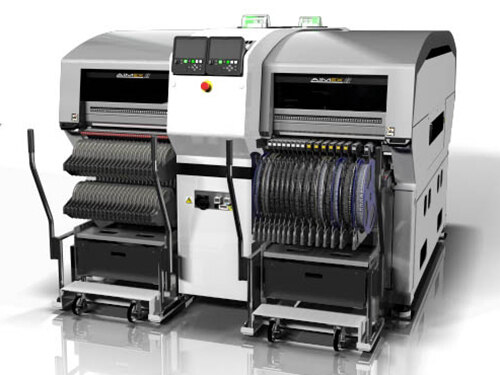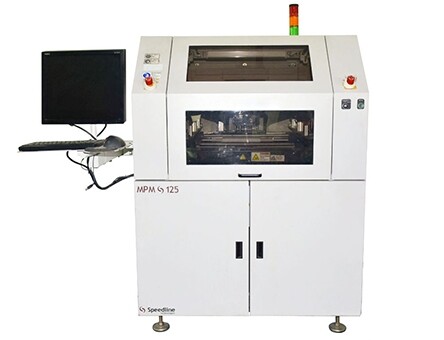Email format error
Email cannot be empty
Email already exists
6-20 characters(letters plus numbers only)
The password is inconsistent
Email format error
Email cannot be empty
Email does not exist
6-20 characters(letters plus numbers only)
The password is inconsistent


In the rapidly evolving world of electronics manufacturing, Surface Mount Technology (SMT) plays a crucial role in the assembly and production of electronic components. SMT machines, such as SMT mounters and SMT printers, are responsible for accurately placing electronic components onto printed circuit boards (PCBs) and applying solder paste before component placement. Operating these machines with utmost precision and efficiency is essential for optimizing production output and ensuring high-quality output. In this article, we will provide an in-depth guide on how to operate SMT machines effectively, focusing on SMT mounters and SMT printers.
1. Understanding the SMT Mounter Machine?
1.1 Overview of an SMT Mounter?
An SMT mounter is a machine used to accurately place electronic components onto PCBs. It consists of various components, including a feeder system, a placement head, a vision system, and a conveyor system. The feeder system holds and supplies the electronic components, while the placement head picks up the components and places them onto the PCBs. The vision system ensures accurate component placement, and the conveyor system moves the PCBs through the machine.
1.2 How to Operate SMT Machines in SMT Mounter?
Operating an SMT mounter involves several key steps. Firstly, the machine needs to be set up, including loading the feeders with the required components and ensuring the machine is properly calibrated. Next, the machine needs to be programmed with the correct placement coordinates and component data. This can be done manually or through software. Once the machine is set up and programmed, it can start placing components onto the PCBs. During operation, it is important to monitor the machine for any errors or issues and troubleshoot them promptly.
1.3 Best Practices:
To optimize SMT mounter performance and improve production efficiency, several best practices can be followed. These include:
- Proper maintenance and calibration of the machine: Regular maintenance and calibration ensure that the machine operates at its optimal level and produces accurate component placements.
- Efficient programming: Proper programming of the machine with the correct placement coordinates and component data is crucial for accurate and efficient operation.
- Effective component management: Proper management of components, including proper storage and handling, ensures that the machine has a steady supply of components and minimizes the risk of errors or defects.
- Continuous monitoring and quality control: Regular monitoring of the machine’s performance and implementing quality control measures, such as Automated Optical Inspection (AOI), helps detect and rectify any issues or defects in real-time.
- Operator training and skill development: Providing proper training to operators and keeping them updated with the latest SMT machine technologies and techniques ensures proficient operation and maximizes machine performance.
2. Mastering the SMT Printer Machine?
2.1 Introduction to an SMT Printer?
An SMT printer is responsible for applying solder paste onto PCBs before component placement. It consists of a stencil, a squeegee, and a vision system. The stencil is aligned with the PCB, and the squeegee spreads the solder paste over the stencil, transferring it onto the PCB. The vision system ensures accurate alignment and proper solder paste deposition.
2.2 Machine Setup and Preparation:
To operate an SMT printer effectively, several steps need to be followed for machine setup and preparation. These include:
- Stencil alignment: Proper alignment of the stencil with the PCB ensures accurate solder paste deposition.
- Solder paste selection: Choosing the right solder paste for the specific PCB and components is crucial for achieving optimal soldering results.
- Inspection criteria: Defining inspection criteria for the solder paste deposition, such as thickness and coverage, ensures consistent quality.
2.3 How to Operate SMT Machines in SMT Printer?
Operating an SMT printer involves loading the PCBs onto the machine, adjusting print parameters, and monitoring print quality. Proper techniques for loading and unloading PCBs, adjusting print parameters such as squeegee pressure and speed, and monitoring print quality through visual inspection or automated inspection systems are essential for achieving accurate and consistent solder paste deposition.
2.4 Advanced Features and Troubleshooting:
Advanced features of SMT printers, such as 2D inspection and automatic cleaning, can further enhance machine performance. 2D inspection systems can detect defects in the solder paste deposition, allowing for immediate corrective action. Automatic cleaning systems ensure that the stencil and squeegee are properly cleaned between print cycles, minimizing the risk of contamination. Troubleshooting common issues, such as misalignment or insufficient solder paste deposition, is also important for maintaining machine efficiency.
3. Key Factors for Successful SMT Machine Operation?
3.1 Component Calibration and Verification:
Accurate calibration of SMT machines is crucial for achieving precise component placement. Regular maintenance and calibration ensure that the machine operates at its optimal level. Verification of component placement accuracy using inspection tools, such as AOI systems, helps detect any errors or defects and allows for immediate corrective action.
3.2 Machine Programming and Data Transfer:
Efficient programming of SMT machines with the correct placement coordinates and component data is essential for accurate and efficient operation. Ensuring software compatibility and seamless data transfer between CAD files and SMT machines minimizes the risk of errors and streamlines the production process.
3.3 Quality Control and Inspection:
Implementing rigorous quality control measures, such as AOI systems, helps detect defects and ensures superior product quality. Regular inspection and monitoring of the machine’s performance and output are essential for maintaining high-quality production.
3.4 Operator Training and Skill Development:
Proper training and continuous skill development among operators are crucial for proficient operation of SMT machines. Operators should be trained on machine setup, programming, maintenance, and troubleshooting techniques. Staying updated with the latest SMT machine technologies and techniques through continuous learning ensures optimal machine performance.
Operating SMT Machines Effectively Plays Important Role
How to operate SMT machines proficiently is critical for maximizing production output, minimizing defects, and ensuring high-quality electronic assemblies. This comprehensive guide has provided an in-depth understanding of SMT mounters and SMT printers while emphasizing essential factors for successful machine operation. By implementing the best practices outlined here, manufacturers can enhance the SMT machine performance and achieve optimal results in the ever-advancing field of electronics manufacturing.